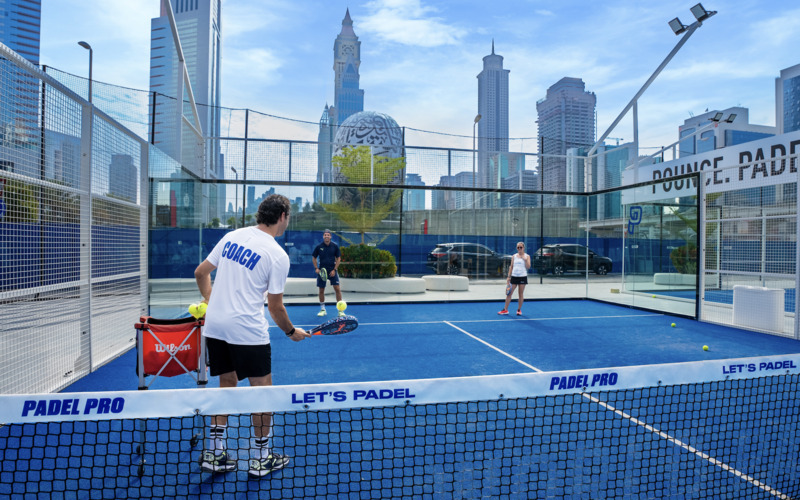Padel tennis, a racquet sport has been growing in popularity worldwide. As we look to the future, the sport presents various growth opportunities and challenges. This blog explores these aspects, providing insights into the potential trajectory of padel tennis.
Growth Opportunities
Global Expansion
One of the most significant opportunities for the sport lies in its global expansion. While already popular in certain regions, there’s a vast potential market in countries like the UAE and all the places where the sport is relatively unknown. Initiatives to introduce the sport through clubs, schools, and local communities can help spur interest and participation. Moreover, leveraging social media and digital platforms can raise awareness and attract a global audience.
Infrastructure Development
The development of dedicated padel courts and facilities is crucial for the sport’s growth. Investing in infrastructure not only makes the sport more accessible but also helps in professionalizing the scene. This includes not only courts but also training centers and academies to nurture talent and provide coaching.
Professionalization and Commercialization
The professionalization of the sport through organized leagues, tournaments, and ranking systems can significantly boost its profile. Additionally, commercialization through sponsorships, partnerships, and merchandise can open new revenue streams, further promoting its growth.
Technological Integration
Incorporating technology, such as video replay systems, wearable tech for players, and online booking systems for a tennis padel court, can enhance the playing experience and make the sport more appealing to a tech-savvy generation. Moreover, online platforms and mobile apps can facilitate community building and engagement among players and fans.
Challenges
Standardization and Regulation
As Padel tennis grows, there’s a need for standardization and regulation to ensure fair play and consistency across different regions. This includes standardizing court dimensions, equipment specifications, and rules of the game. Establishing a global governing body could help address these issues and unify the sport worldwide.
Market Saturation and Competition
In regions where padel tennis is already popular, there’s a risk of market saturation, with too many facilities competing for a limited audience. Additionally, the sport faces competition from established racquet sports like tennis and squash. Differentiating padel tennis and highlighting its unique aspects are crucial for attracting players and spectators.
Accessibility and Inclusivity
Ensuring the sport is accessible and inclusive to people of all ages, backgrounds, and skill levels is essential for sustained growth. This includes making courts available and affordable, offering padel lessons to beginners and youth, and promoting diversity within the sport.
Environmental and Sustainability Concerns
As new facilities are built, there’s a need to consider environmental impacts and sustainability. This includes using eco-friendly materials, implementing energy-efficient designs, and ensuring that new developments do not adversely affect local communities and ecosystems.
Conclusion
The future of Padel tennis is bright, with significant opportunities for growth and expansion. However, addressing the challenges of standardization, competition, accessibility, and sustainability is crucial for the sport’s long-term success. By embracing innovation, fostering community, and promoting inclusivity, padel tennis can continue to thrive and captivate players and fans around the world.



